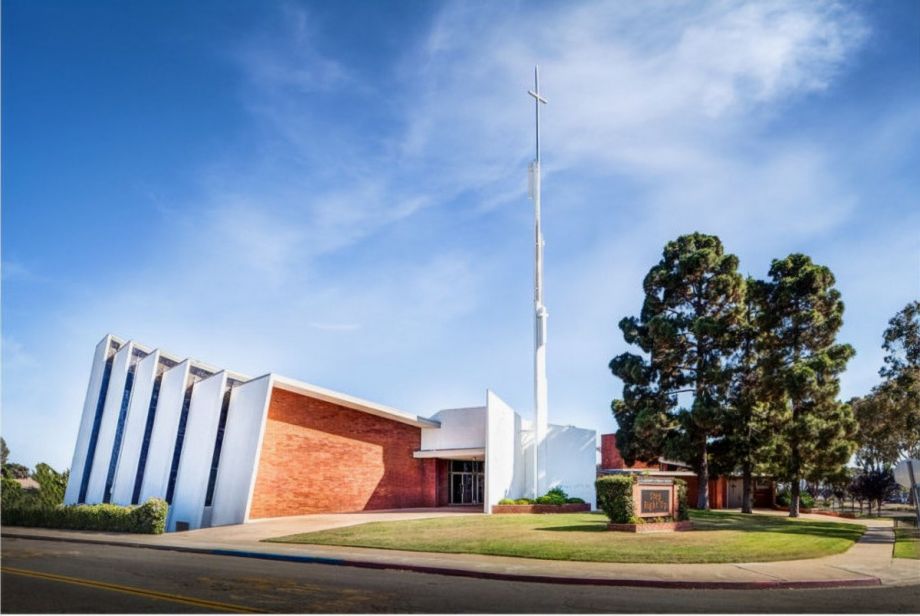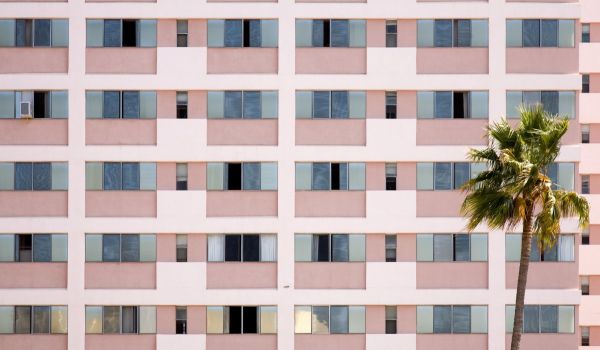Four years ago, the congregation of Clairemont Lutheran Church, in San Diego, California, wondered what it’d take to build affordable housing. The redevelopment of their fellowship hall was moving slowly through the city approval process, and including housing might speed it up. They also knew the city, like many in California, faced a severe housing shortage.
But what the congregation quickly realized, according to Pastor Jonathan Doolittle, was that “from the city’s perspective, it didn’t make any sense.” The congregation didn’t fit the characteristic of affordable housing builders; the city had no official planning process to approve a small housing development on church property; the congregation couldn’t afford the environmental impact report required to build on its parking lot.
“Our project was too small to demand any variances to the [building] code,” Pastor Doolittle explains. “After four years, and not getting anywhere, it becomes difficult to rally people for a vision they don’t see going anywhere.”
You could call it fate that this years-long roadblock coincided with brainstorming between two San Diego housing advocates, Tom Theisen and Monica Ball. Theisen is a retired attorney and former chair of the Regional Task Force on the Homeless. Ball is a realtor and board member of the faith-based nonprofit UPLIFT San Diego.
Theisen and Ball were acutely aware of San Diego’s housing and homelessness crisis, and the city’s struggle to meet housing demands.
According to estimates from the Building Industry Association, San Diego needs to build a minimum of 12,000 housing units every year to meet current demand — at present, the city is building less than half that total.
But the pair were intrigued by a list compiled by the San Diego County Tax Collector, which showed the county had over 1,000 properties zoned for religious use, on over 2,000 acres of land. Much of that land was already zoned for housing.
So in April of this year, they presented a slideshow to the Community Planners Committee, which represents San Diego’s neighborhood planning groups, laying out the urgency of housing needs while pointing out that “every world religion has a call to aid the vulnerable.” They dubbed their efforts YIGBY: Yes In God’s Backyard.
“We are really trying to do a paradigm shift of how we develop affordable housing,” says Theisen. “If we go in and talk to the city about potentially building 3,000 units, by aggregating all these different faith-based properties, all of a sudden the city gets very excited about it.”
San Diego’s planning department, in fact, is listening. They provided YIGBY with a list of houses of worship that planners felt were best for development. They’re analyzing how zoning ordinances might work for proposals like Clairemont Lutheran Church, and how the city might expedite its approvals process.
That receptiveness encouraged YIGBY to set an ambitious goal: Help open housing at Clairemont Lutheran Church by the end of this year, and build capacity to develop as many as 50 projects annually within the next five years.
Pastor Doolittle points out that churches often have underutilized land — as congregations have declined, parking lots are less full. Reusing that land is a way for houses of faith to diversity their property and give back to their community.
“If congregations are going to survive into the future, and find ways to economically support the needs of their congregation, they’ll need to find creative funding,” says Pastor Doolittle. “Twenty years ago, every church thought that meant a preschool, but now we’re in a post-preschool world and I think housing is a better use of land that congregations have.”
Building on property that houses of worship already own eliminates land cost. “Then we can afford to build the housing and pay for it from the income coming from the rental of those units,” Theisen explains. “These projects pay for themselves.”
This significantly speeds up construction, he adds, as projects won’t require time and legwork to secure government or philanthropic funding.
YIGBY also believes when local faith communities invest in affordable housing, it can quell the “NIMBY” attitude that often emerges in the face of denser housing development and slows the approval process.
“There are a number of big developers that have developed the ire of the community as a whole,” says Pastor Doolittle. “Meeting with the community and talking about [our] project, they say it makes sense. When people understand what we’re doing, it takes away some of the anger and fear associated with this kind of a housing project.”
Clairemont Lutheran Church ultimately envisions a roughly 16-unit affordable rental for San Diego residents transitioning out of supportive housing. Though the property is not downtown, it’s near numerous bus lines and a major mall, according to Pastor Doolittle.
“Other [faith] communities may be looking at senior or transitional housing,” Theisen says. “It depends on the best fit for the faith community and the neighborhood they’re in.”
Clairemont Lutheran Church will serve as “proof of concept” before YIGBY ramps up with other houses of worship.
“If it weren’t for the YIGBY connection,” Pastor Doolittle says, “we probably would be giving up.”
This article is part of Backyard, a newsletter exploring scalable solutions to make housing fairer, more affordable and more environmentally sustainable. Subscribe to our weekly Backyard newsletter.

Emily Nonko is a social justice and solutions-oriented reporter based in Brooklyn, New York. She covers a range of topics for Next City, including arts and culture, housing, movement building and transit.
Follow Emily .(JavaScript must be enabled to view this email address)


















